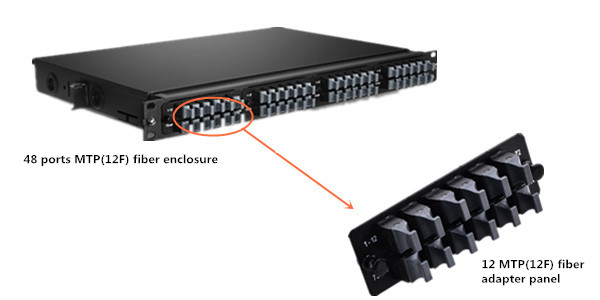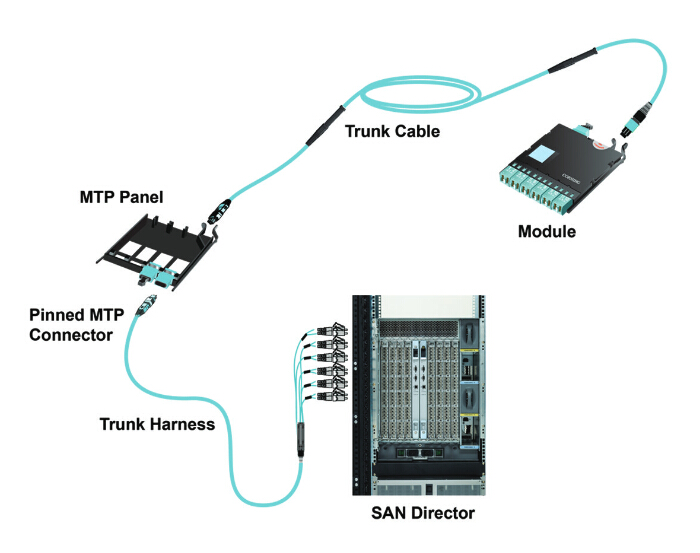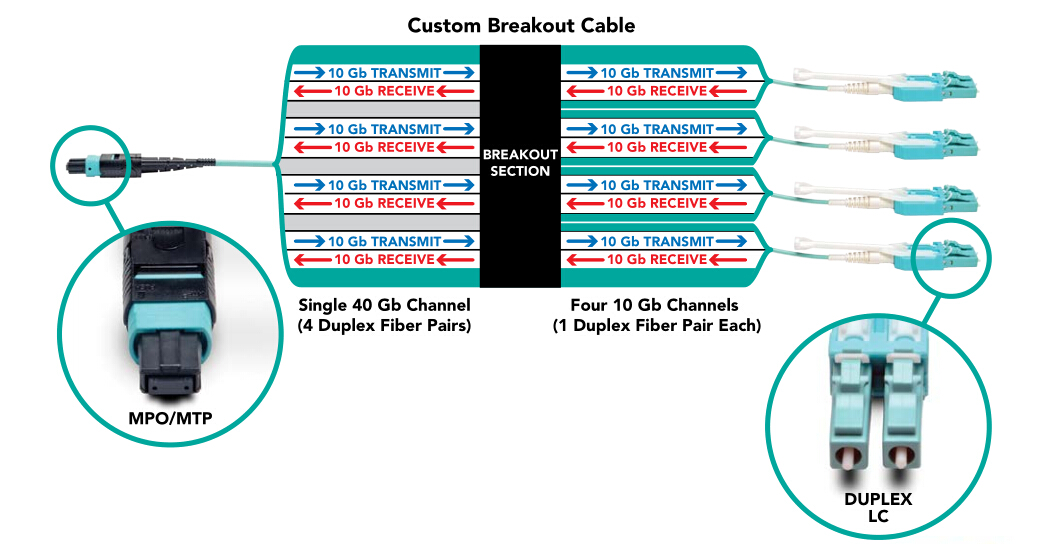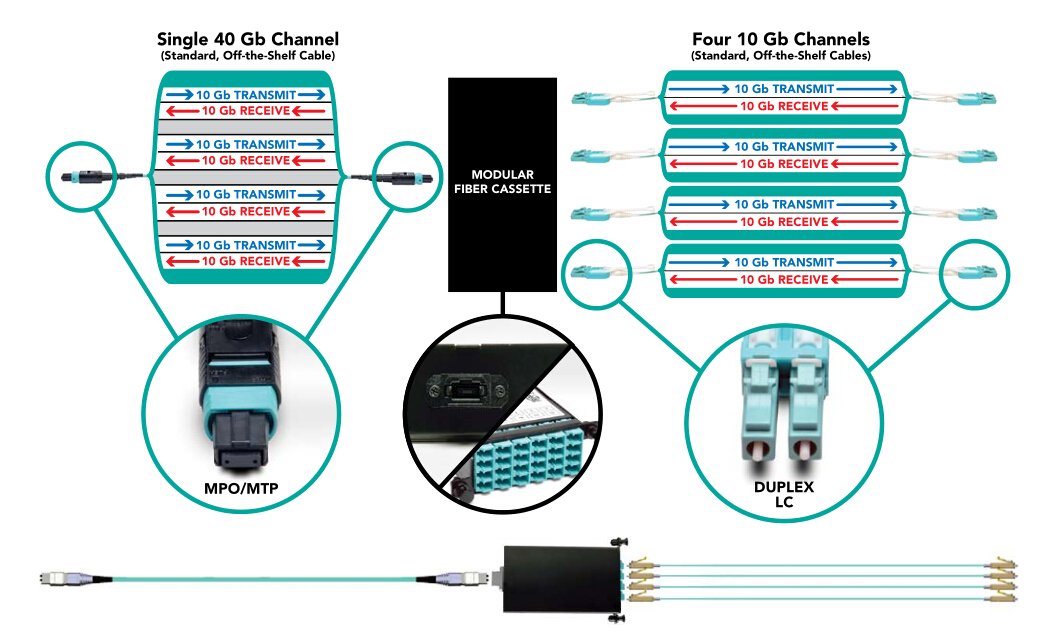Data
center and telecommunications rooms are rapidly outgrowing their
footprints to meet increasing network demands. Keeping costs low and
getting higher density are always the goals of data center managers. The
modular system allows for rapid deployment of high density data center
infrastructure as well as improved troubleshooting and re-configuration
during moves, adds and changes. This article will talk about the modular
system products and the associated cabling options.
Modular System Products
Fiber
patch panels offer the highest level of scalability and density.
High-density fiber patch panel or enclosure is an ideal solution for
installation with space constraints, and available in flat and angled
designs. The angled design increases rack density, managing high-density
applications in one-fourth the area needed for conventional cable
management systems.

There
are two types of cassettes—LGX MTP/MPO cassette and HD MTP/MPO
cassette. Both the two types provide secure transition between MTP and
LC or SC discrete connectors. With LC or SC adapters on the front side
and MTP at the rear, they are used to interconnect MTP backbones with LC
or SC patching. The MTP cassettes contain factory controlled and tested
MTP-LC fanouts to deliver optical performance and reliability. They can
be used in 1RU or 3RU 19” multislot chassis.

The
HD MTP/MPO cassette is more compact than the LGX MTP/MPO cassette. When
using with patch panel, up to 5 HD MTP cassettes can be held in a 1RU
HD chassis, but for LGX MTP cassette, only 3 cassettes can be held in it
as shown in the above picture. Thus, the HD MTP cassette can improve
the port density in the same 1RU panel and save more space.
Fiber
adapter panels snap quickly into the front of the fiber patch panels
and enclosures for easy network deployment or moves, adds, and changes.
They can house, organize, manage and protect fiber optic cables. For
example, a 48 ports 1RU fiber enclosure can be loaded with four 12x MTP
fiber adapter panels. It provides a comprehensive line of fiber
distribution enclosures that offer a flexible and modular system for
managing fiber terminations, connections, and patching in all
applications.

Cabling Options for Modular System
High-density
modular system features an innovative design allowing for a plug and
play pre-terminated system configuration. Cable assemblies can be
directly terminated and installed in the cassettes for fast and easy
installation.
MTP/MPO
trunk cables are used to interconnect cassettes, panels or ruggedized
MPO fan-outs, spanning MDA, HDA and EDA areas, and to facilitate rapid
deployment of high density backbone cabling in data centers and other
high fiber environments reducing network installation or
reconfiguration. They offer the flexibility in case any decision is made
to change the connector style in the patch panels, new cassettes can be
installed with the new connector style on the cross-connect side of the
patch panel without having to change the connector on the cable trunk.

MTP/MPO
fanout assemblies route multifiber MTP connection into discrete
connectors. They are used to directly interconnect MTP cassettes, panels
or backbone MTP assemblies with the active equipment, saving costly
data center rack space and easing fiber management.
Summary
The
modular system is the choice to ease future expansion and for quick and
easy system re-configuration, which can save space and meet the demand
for high-density network infrastructure. The modular system products and
associated cables are all available in FS.COM. For more details, please
visit www.fs.com or contact sales@fs.com.
Source: www.fiberopticshare.com




